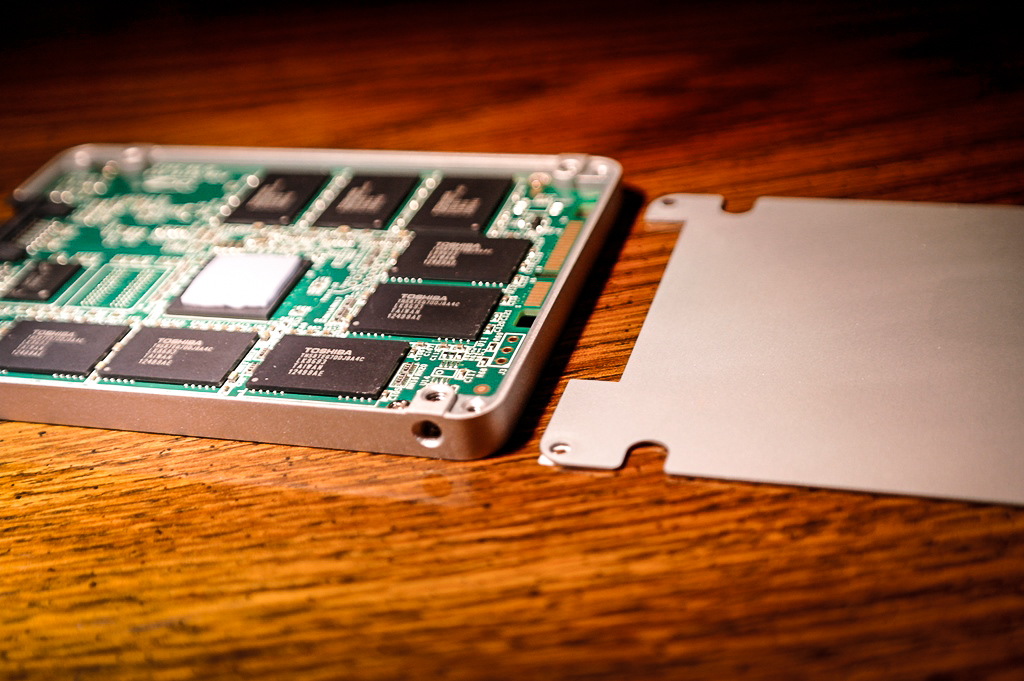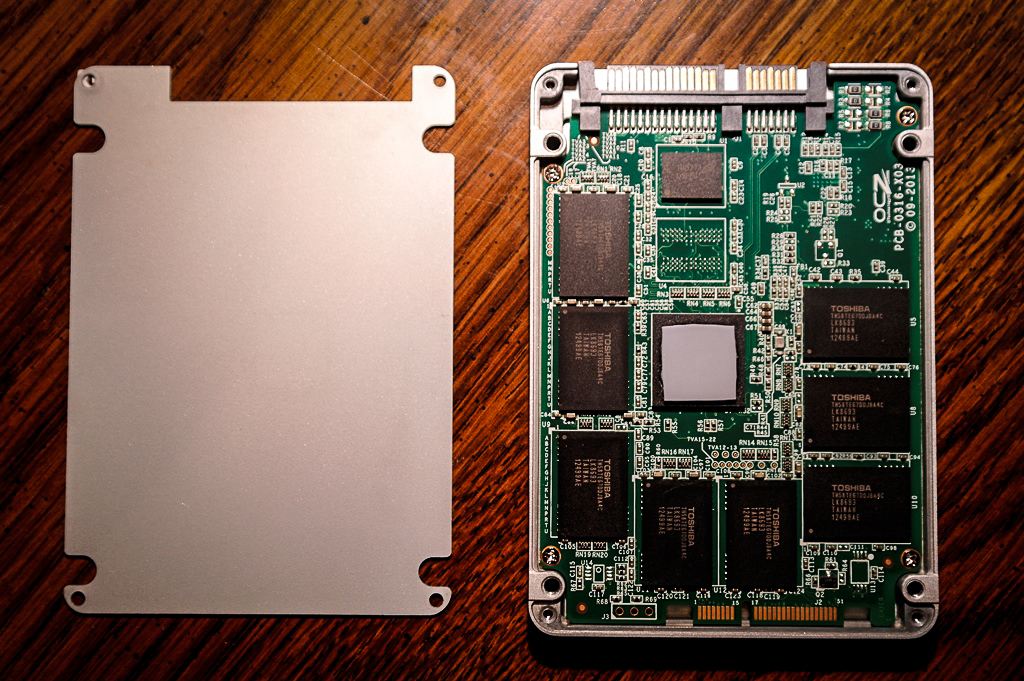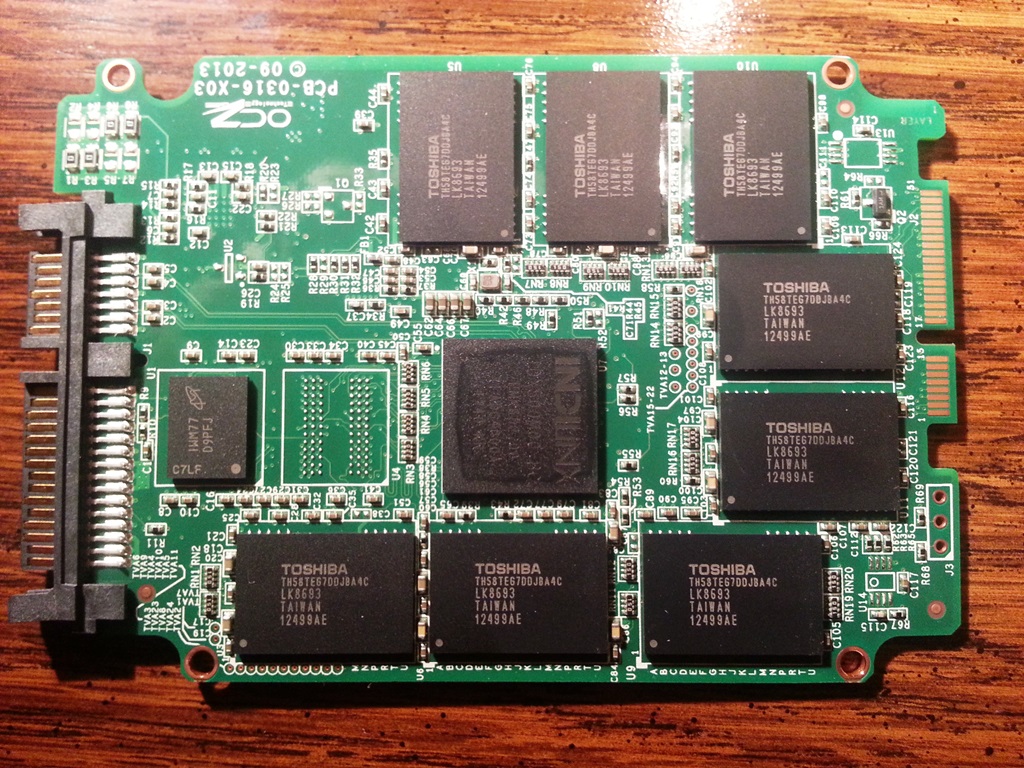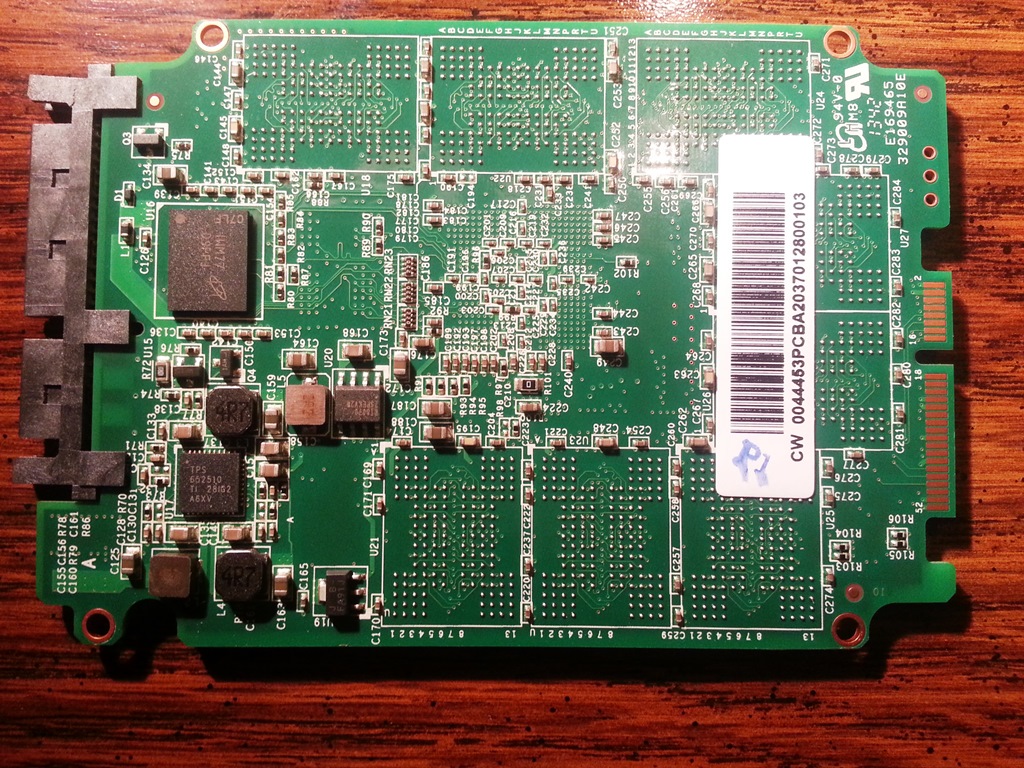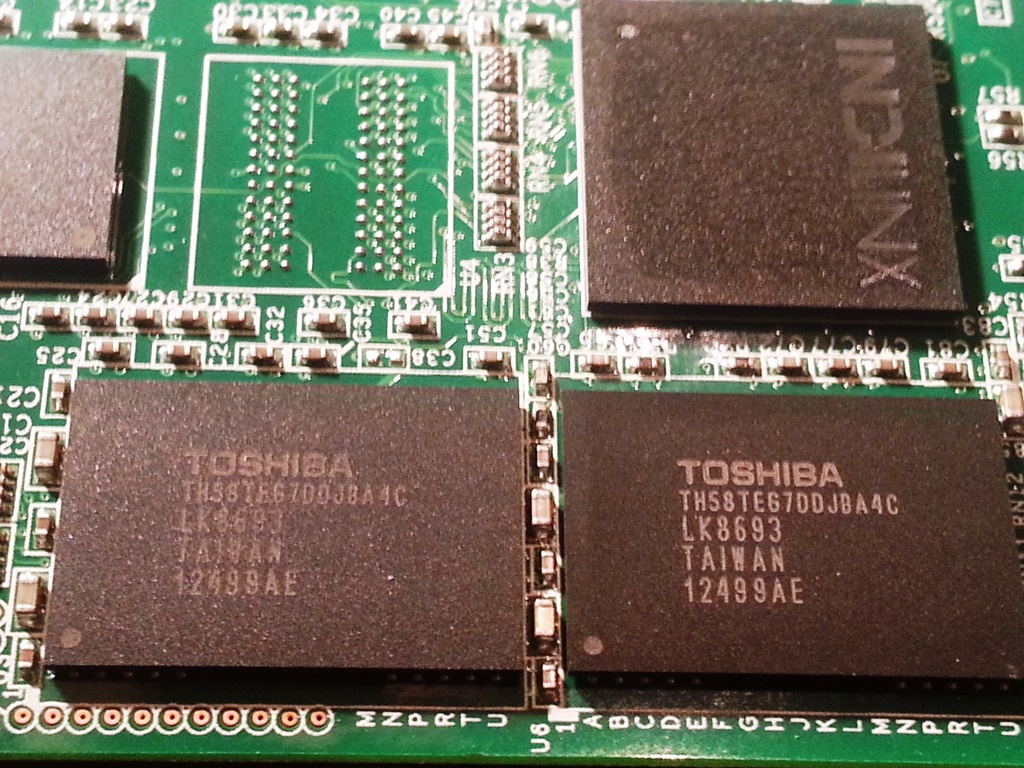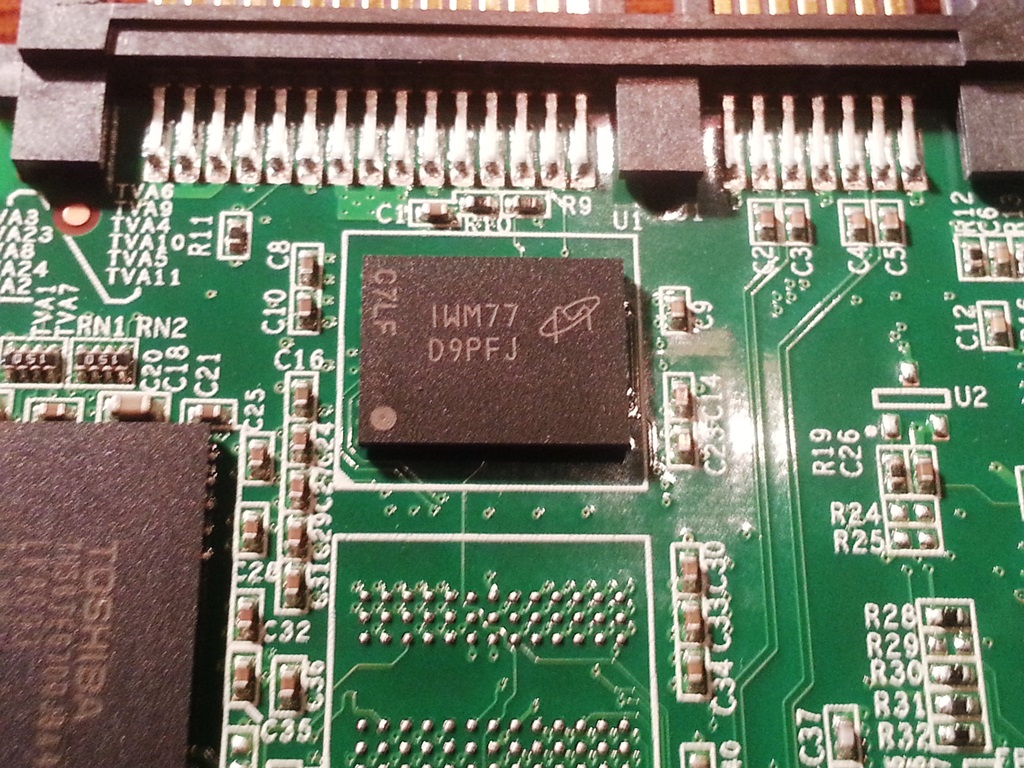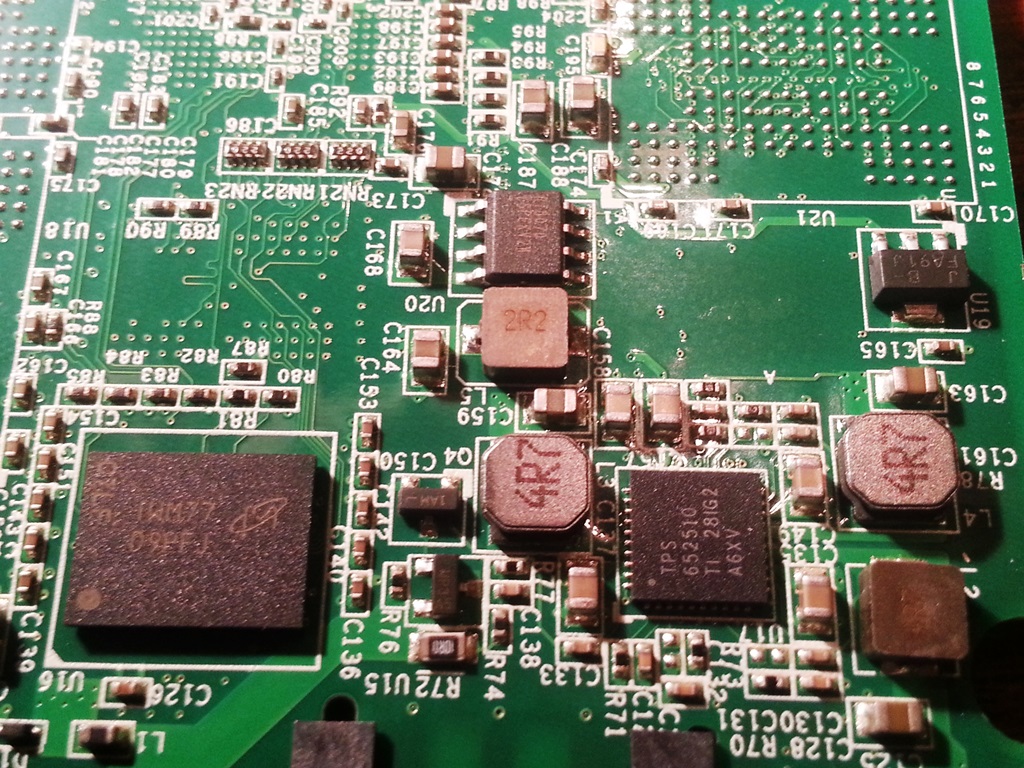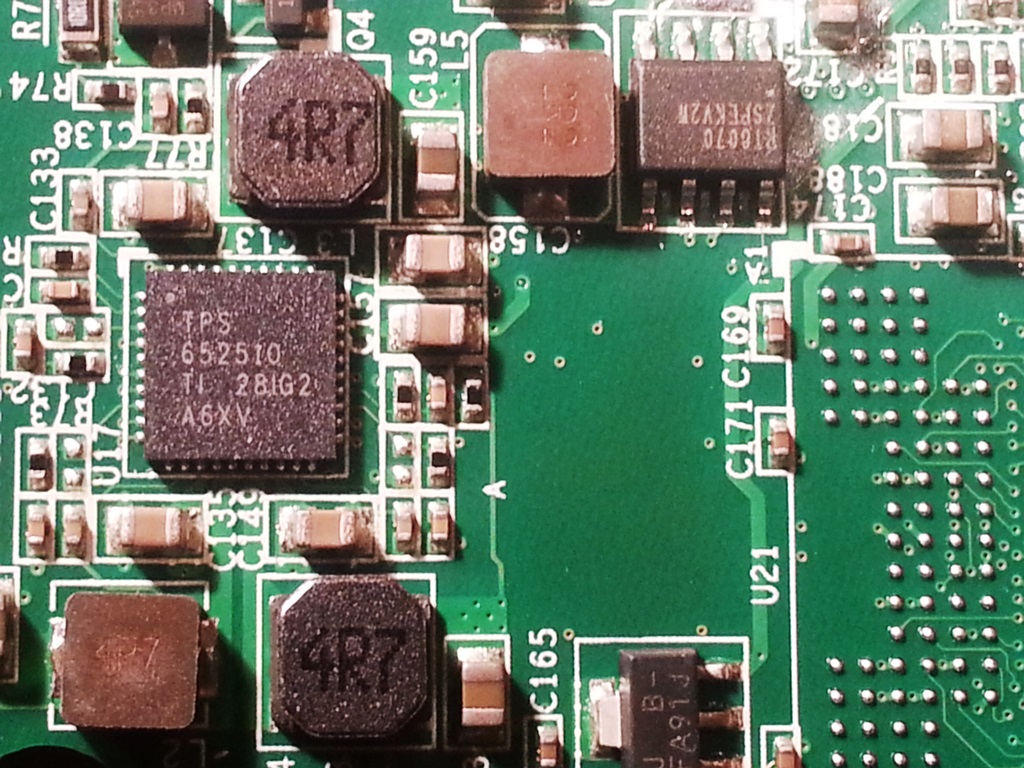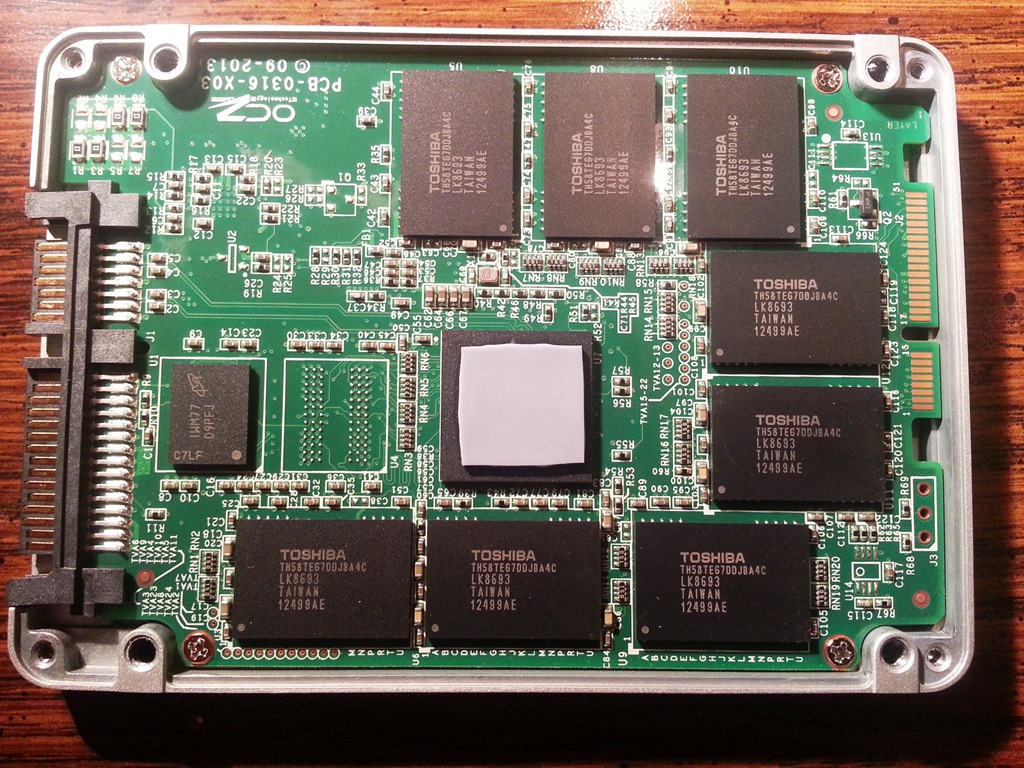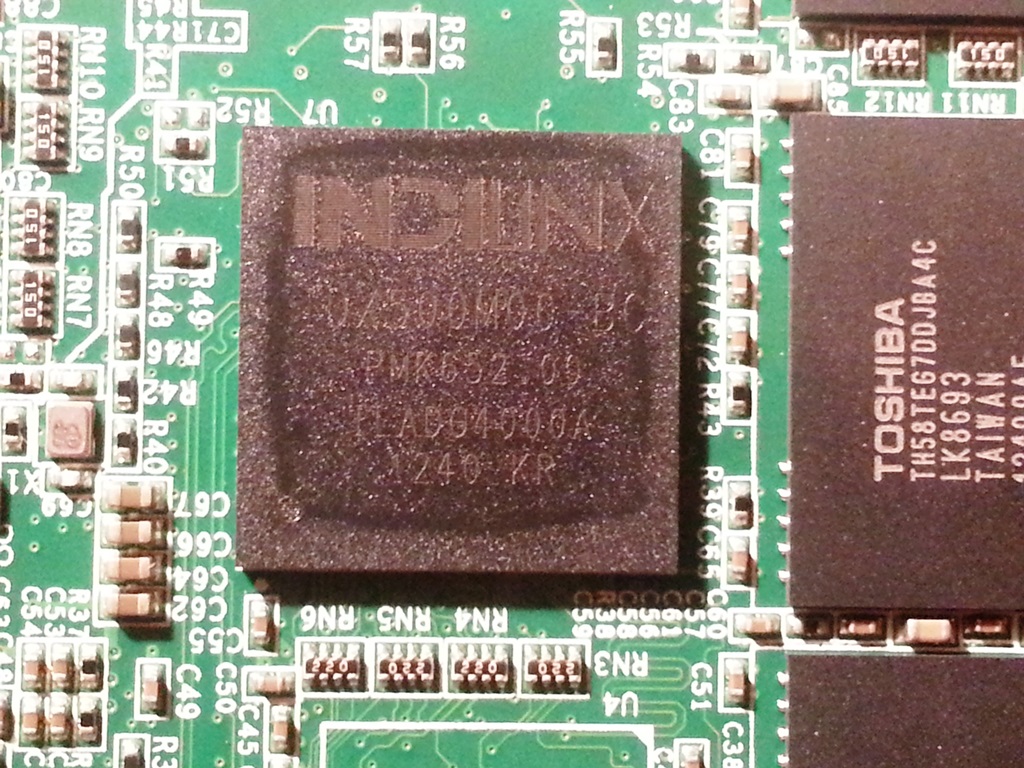VECTOR 150 INTERIOR
Getting to the inside is easy enough. Four screws hold the thin shell which reveals the PCB:
An additional four screws allow complete removal of the green PCB from the enclosure:
Right off the bat you will notice the 19nm Toshiba MLC flash packages, bearing the product number TH58TEG7DDJBA4C which is of the latest 19nm process. The 120GB version in particular has eight of these modules at 16GB each for a total of 128GB, 8GB going towards over-provisioning which leaves us with the advertised 120GB capacity.
There are two 256MB DDR3-1600MHz Micron IWM77 D9PFJ chips, one on each side, for a total of 512MB cache buffer strategically located close to the PCI-E bus pins for extremely low latency. We also have a Texas Instruments TPS652510 power management integrated controller with three step-down buck converters. Both high-side and low-side MOSFETs are integrated to provide fully synchronous conversion with higher efficiency. Alongside the buffer cache, the two make a formidable data-protection combo.
Removing the thermal pad, we finally get to the star of the show; the Indilinx Barefoot 3 IDX500M00-BC SATA 6Gbps controller. The IB3 is an extremely popular and powerful workhorse that has made its appearance in the Vertex 450, the first Vector, and now the Vector 150…and just as well as it is OCZ’s very own custom made FPU.
This iteration now supports AES-256 hardware encryption as well as higher endurance cycles; unfortunately extra encryption via TCG Opal 2.0 and IEEE-1667 have not made the transition, effectively nullifying BitLocker. Another Windows 8.1 feature missing on top of BL is DevSleep, meaning idle power consumption will be high – a relatively big omission considering competing SSDs have implemented it quite well already.
Review Overview
SSD Build
Performance
Warranty
Power Consumption
Pricing and Availability
SSD Powerhouse!
As expected with the Barefoot 3 controller, the OCZ Vector 150 has great performance, however, we found power consumption ratings a bit under the weather.
 Technology X Tomorrow's Technology Today!
Technology X Tomorrow's Technology Today!

